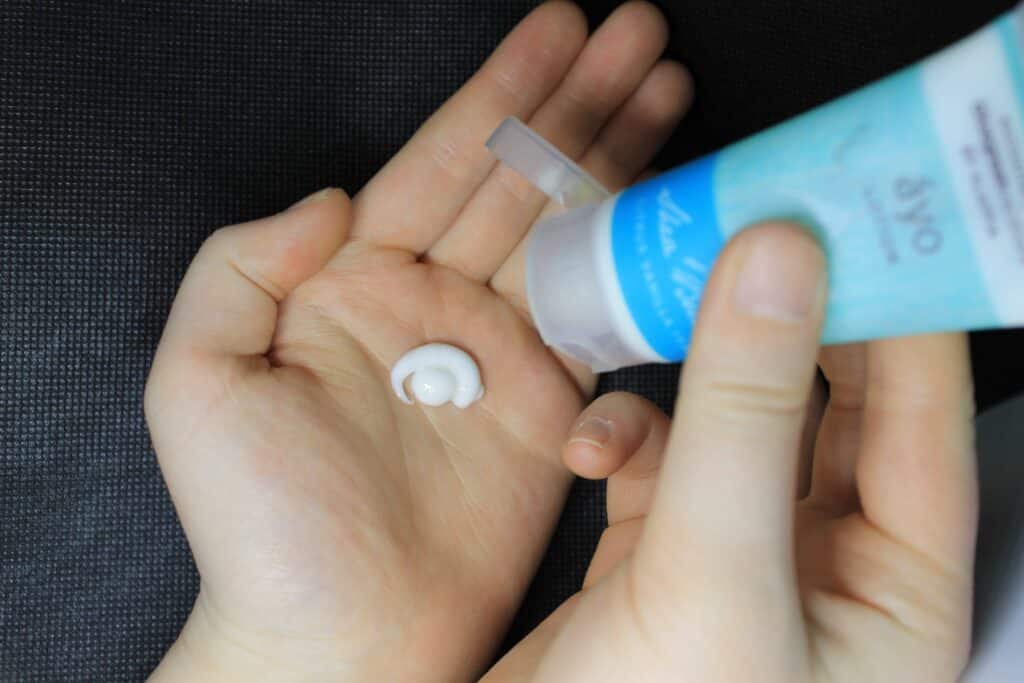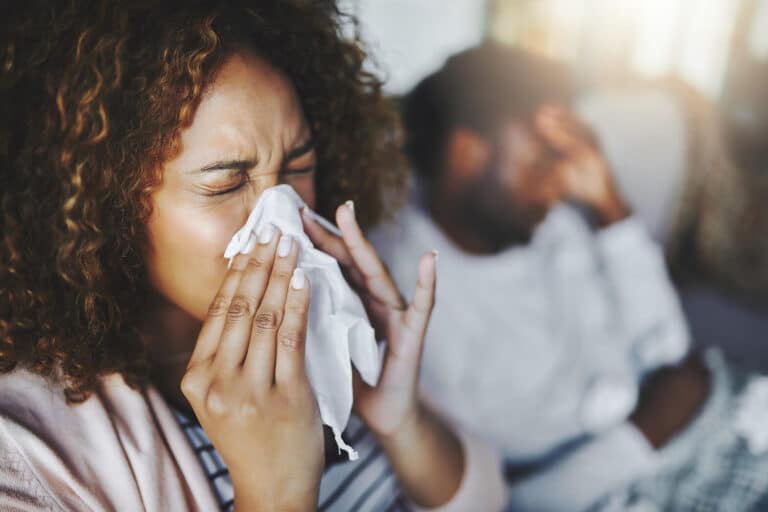Mostly affecting people over 50, shingles is a painful skin condition caused by the same virus as chickenpox, called the varicella-zoster virus. About one in three people will get shingles, and outbreaks usually last for 3 to 5 weeks.
If you’ve ever had chickenpox, you’re at risk of developing shingles – since once you heal from chickenpox, the virus stays in your system and hibernates in nerve cells. Although your immune system keeps the virus in check, as you get older your immune system naturally weakens, and this can cause a localized shingles outbreak somewhere on your body.
Shingles in stages: there are four different stages of shingles, including a skin-blistering phase which makes the disease contagious to other people. Here’s what you need to know about the shingles early stages, how it progresses, as well as the healing stages.
And if you want to see a doctor sooner rather than later, you can use the Air Doctor app.
Understanding Shingles In Stages
How does shingles progress? It occurs in four stages: tingling pain or numbness, burning feeling or rash, blistering, and crusting over. Let’s go over each stage.
1. Tingling Pain or Numbness
The shingles early stages usually start with a particular area of your body starting to feel different. This is before anything actually appears on your skin. During this first stage of shingles, you may experience itching, burning, or even pain. Often this may only affect one side of your body. But each person experiences the initial signs of shingles differently. Some cases cause intense sensitivity, while in others, your skin may feel numb.
2. Burning Feeling and Rash
Between 1 and 5 days, after you’ve started to experience the tingling or numbness, a red rash will develop on the same area of your skin. More often than not, this rash will appear on one side of your torso, but its possible for it to show up anywhere on your body.
Along with the rash, you may also experience symptoms such as:
- Headache
- Fever
- Upset stomach
Once the rash has appeared, you should contact your doctor so you can start treatment as soon as possible. Starting treatment within 3 days of the rash first appearing lowers your risk of developing complications such as long-term pain.
3. Blistering
When it comes to shingles in stages, the third stage is easily the most uncomfortable. This is when painful blisters begin to form. These blisters are filled with fluid and can break open, oozing fluid that contains infectious amounts of the varicella-zoster virus.
If someone who hasn’t had chickenpox comes into contact with this fluid, it may infect them and induce a case of chickenpox. But people who’ve already had chickenpox (or the chickenpox or shingles vaccine) will not be at risk of catching the virus.
4. Blisters Crust Over
Now we’re onto the shingles healing stages. Within about 7 to 10 days after the blisters appear on your skin, they’ll start to dry up. The fluid will form a crust over the rash and these sores will no longer be open. You’ll also stop being contagious.
Once the blisters have crusts on them, your skin will gradually heal. The complete healing process of the rash can take up to a month. In some cases, scarring could be left behind. Initially, they’re dark red, but usually fade in time.

How Quickly Does Shingles Progress?
A shingles outbreak could last up to five weeks. Anywhere between one and 5 days after you experience tingling or burning, the rash will appear. A few days later, it will turn into blisters, and about one week to 10 days after that, the blisters dry up and crust over. A couple of weeks later, the scabs clear up.
How Shingles Is Treated
Just like other viral infections, (like the common cold) shingles must run its course. But treatments can shorten the course.
The primary treatment for shingles is an antiviral medication. Three common antivirals include:
- Acyclovir
- Valacyclovir
- Famciclovir
If taken soon after the rash has developed, the antiviral medicine can speed up the healing process by a week or more, as well as lessen the severity of your symptoms. Over-the-counter pain medication may also be helpful, especially during the beginning stages of a shingles outbreak.
Topical treatments that ease itching include:
- A cool, wet compress
- Calamine lotion
- Colloidal oatmeal baths
When to See a Doctor
Shingles’ early stages include symptoms that seem like localized pain or flu-like feelings – which aren’t obvious signs of a shingles outbreak. Once a rash appears, you should see your primary care physician or a dermatologist. A trained doctor can often diagnose shingles just by inspecting the rash.
If you have shingles, you may never experience the severe pain that often comes with it. You might be lucky enough to only feel itching and some minor discomfort. Even without the painful symptoms, you should see a healthcare professional and start antiviral treatment withing 72 hours of a rash’s appearance.
Shingles FAQs
Either the left or right side of the torso – these are the most common places that a shingles rash develops. It generally forms a stripe of blisters that wraps around the torso.
- Ringworm
- Viral infections
- Psoriasis
- Eczema
- Allergic rashes
Shingles aren’t contagious. It doesn’t spread from one person to another. But the varicella-zoster virus is contagious. The blistering stage is when this virus is most likely to pass from person to person since the blisters are filled with this infectious fluid.
In rare cases, yes. Blisters spread to nearby parts of the body or even the whole body. This usually happens if the immune system is compromised due to cancer or AIDS. Under these circumstances, shingles can be life-threatening.
Usually, a shingles rash clears up on its own within 3-4 weeks. It can resolve without treatment, but antiviral treatment can shorten both the duration and severity of the rash.












